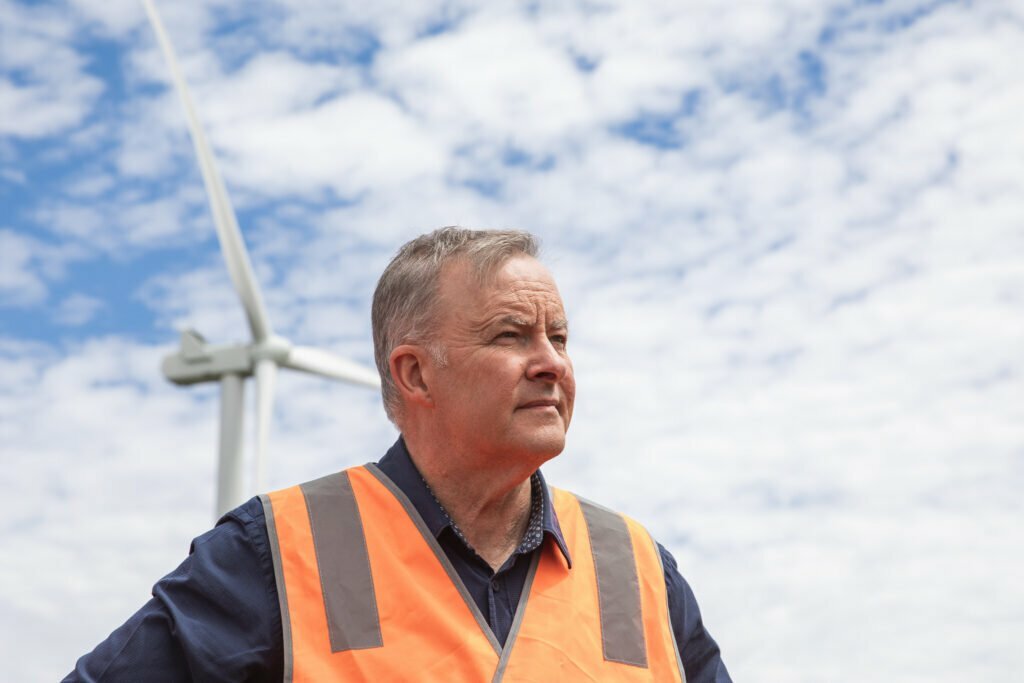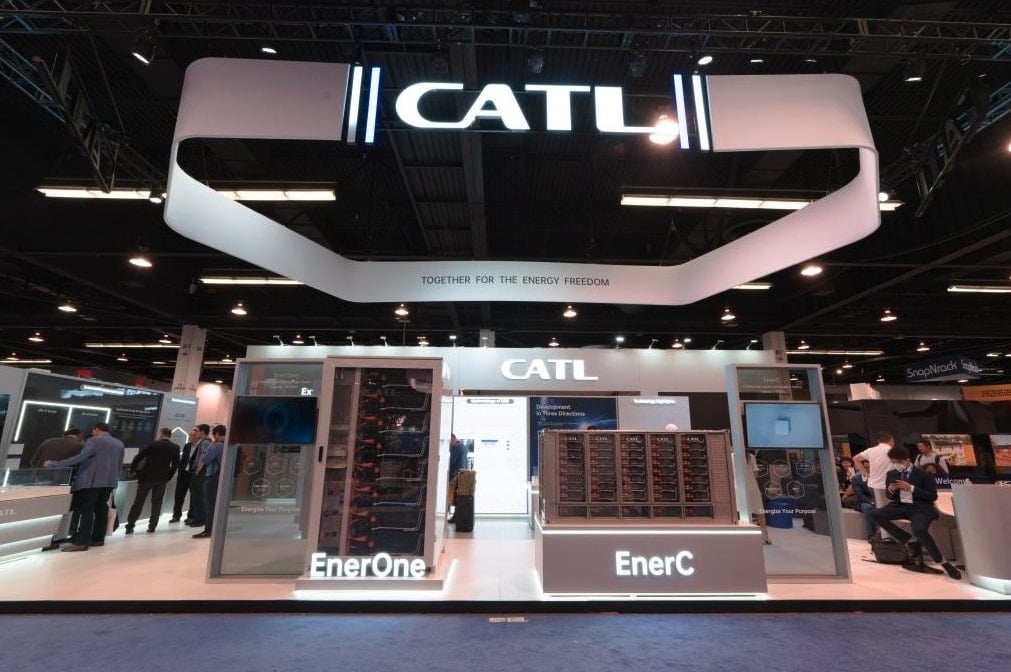Prime Minister Anthony Albanese at a wind farm in New South Wales. Image: Anthony Albanese’s office via Twitter.
Australia’s government has put its support behind two major transmission projects which will interconnect different regions of the country’s grid and increase the utilisation of renewable energy.
The Labor Party, which went into office this year under the leadership of prime minister Anthony Albanese is creating Rewiring the Nation, a AU$20 billion (US$12.6 billion) initiative to modernise the electric grid.
Prior to Labor taking power, the Australian Energy Market Operator (AEMO) was tasked by the federal as well as state governments to produce an investment plan. According to AEMO’s estimates, its Integrated System Plan will result in net benefits worth more than double the cost of Rewiring the Nation.
Albanese’s government said Rewiring the Nation offers the lowest-cost pathway to the vision AEMO set out, partnering with transmission companies and offering cheap loans that should enable their projects to go ahead.
Today, low-cost loans were confirmed for the Victoria-New South Wales Interconnector (VNI West) KerangLink project to increase interconnection capacity between the two states, as well as for Marinus Link, a project to connect the island state of Tasmania to Victoria, and therefore to the National Electricity Market (NEM).
There will also be financing available for projects in Tasmania’s Battery of the Nation plan, as well as for development of Renewable Energy Zone (REZ) projects in Victoria.
Battery of the Nation
As reported previously by Energy-Storage.news, the 1500MW Marinus Link subsea interconnector is a key piece of the Battery of the Nation plan. The Tasmanian plan would see new large-scale pumped hydro energy storage (PHES) and wind power plants built in the state, which could be utilised in the NEM.
Tasmania wants to be able to generate twice as much energy as it needs on the island and export the surplus. The previous federal government signed agreements with Tasmania’s state rulers to support the project with AU$75 million funding in April, but today’s pledge from Labor dwarfs that.
As well as a concessional loan for up to 80% of the Marinus Link’s project costs, administered through the national Clean Energy Finance Corporation, the governments of the Commonwealth and Victoria and Tasmania will finance the remaining 20% with equity investment.
There will also be up to AU$1 billion of low-cost loans made to support Battery of the Nation projects, including a large-scale pumped hydro plant and redevelopment of an existing hydroelectric power facility. There will also be further loans to support transmission upgrades within Tasmania.
According to utility Hydro Tasmania, the Marinus Link’s twin 750MW cables will enable the construction of a 750MW, 20-hour (15GWh) PHES plant at Tasmania’s Lake Cethatha.
Victorian Renewable Energy Zones
Today’s announcement will fast-track development of Victorian Renewable Energy Zones (REZ) and offshore wind, with the Victoria and Australian governments signing an agreement today to jointly fund the projects.
Rewiring the Nation will make up to AU$1.5 billion in concessional loans available for REZ projects including offshore wind. Separately, the governments will also support further offshore wind projects.
Meanwhile the CEC will also lend up to AU$750 million towards the cost of the VNI-West KerangLink interconnector, which the governments said will unlock 4,000MW of new power generation by 2028. It will also allow for greater utilisation of the Snowy 2.0 pumped hydro power station under construction in New South Wales, with a scheduled operational start date of 2025-2026.
Continue reading










